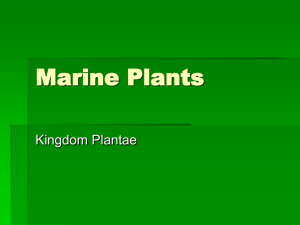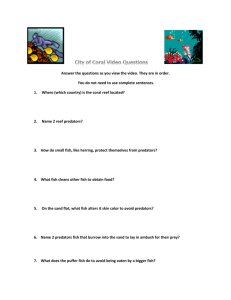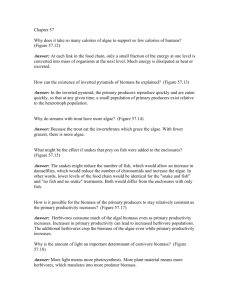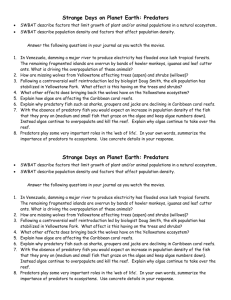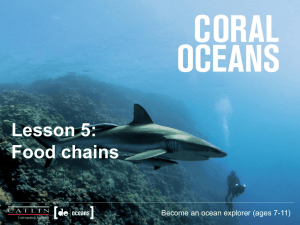The sea bed on shallow water
advertisement
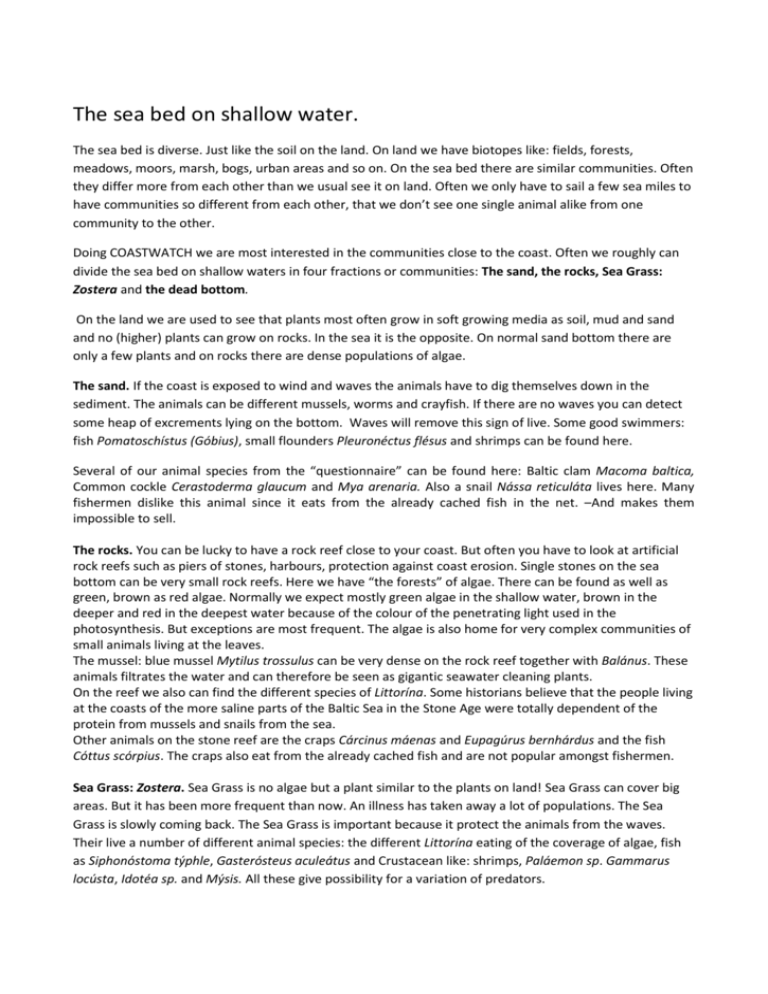
The sea bed on shallow water. The sea bed is diverse. Just like the soil on the land. On land we have biotopes like: fields, forests, meadows, moors, marsh, bogs, urban areas and so on. On the sea bed there are similar communities. Often they differ more from each other than we usual see it on land. Often we only have to sail a few sea miles to have communities so different from each other, that we don’t see one single animal alike from one community to the other. Doing COASTWATCH we are most interested in the communities close to the coast. Often we roughly can divide the sea bed on shallow waters in four fractions or communities: The sand, the rocks, Sea Grass: Zostera and the dead bottom. On the land we are used to see that plants most often grow in soft growing media as soil, mud and sand and no (higher) plants can grow on rocks. In the sea it is the opposite. On normal sand bottom there are only a few plants and on rocks there are dense populations of algae. The sand. If the coast is exposed to wind and waves the animals have to dig themselves down in the sediment. The animals can be different mussels, worms and crayfish. If there are no waves you can detect some heap of excrements lying on the bottom. Waves will remove this sign of live. Some good swimmers: fish Pomatoschístus (Góbius), small flounders Pleuronéctus flésus and shrimps can be found here. Several of our animal species from the “questionnaire” can be found here: Baltic clam Macoma baltica, Common cockle Cerastoderma glaucum and Mya arenaria. Also a snail Nássa reticuláta lives here. Many fishermen dislike this animal since it eats from the already cached fish in the net. –And makes them impossible to sell. The rocks. You can be lucky to have a rock reef close to your coast. But often you have to look at artificial rock reefs such as piers of stones, harbours, protection against coast erosion. Single stones on the sea bottom can be very small rock reefs. Here we have “the forests” of algae. There can be found as well as green, brown as red algae. Normally we expect mostly green algae in the shallow water, brown in the deeper and red in the deepest water because of the colour of the penetrating light used in the photosynthesis. But exceptions are most frequent. The algae is also home for very complex communities of small animals living at the leaves. The mussel: blue mussel Mytilus trossulus can be very dense on the rock reef together with Balánus. These animals filtrates the water and can therefore be seen as gigantic seawater cleaning plants. On the reef we also can find the different species of Littorína. Some historians believe that the people living at the coasts of the more saline parts of the Baltic Sea in the Stone Age were totally dependent of the protein from mussels and snails from the sea. Other animals on the stone reef are the craps Cárcinus máenas and Eupagúrus bernhárdus and the fish Cóttus scórpius. The craps also eat from the already cached fish and are not popular amongst fishermen. Sea Grass: Zostera. Sea Grass is no algae but a plant similar to the plants on land! Sea Grass can cover big areas. But it has been more frequent than now. An illness has taken away a lot of populations. The Sea Grass is slowly coming back. The Sea Grass is important because it protect the animals from the waves. Their live a number of different animal species: the different Littorína eating of the coverage of algae, fish as Siphonóstoma týphle, Gasterósteus aculeátus and Crustacean like: shrimps, Paláemon sp. Gammarus locústa, Idotéa sp. and Mýsis. All these give possibility for a variation of predators. The dead bottom. The dead bottom is not dead. If we count the numbers of living organisms in “the dead bottom” there are more here than any place else. But here we have only few species of Sulphur bacteria. So examining the bottom of e.g. a harbour, sometimes this bottom appears white – and sometimes people regard this colour as indication of clean sand! But it is not. It is light sulphur bacteria. And if you touch the layer black “dust” will appear in the water. There is no oxygen here. And since higher live forms require oxygen we have no live of this kind here. And if you should be in doubt of the consistency of the bottom you just have to explore the smell.

